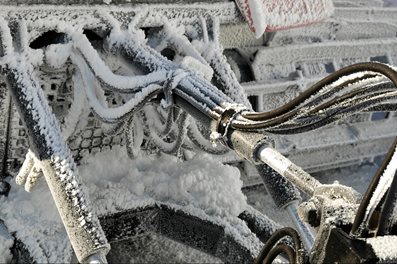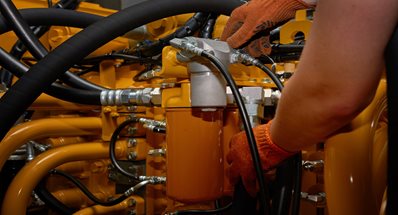How Cold Weather May Affect Your Hydraulic System
Hydraulic systems rely on fluid to convey energy to produce mechanical power. At White House Products, Ltd., we offer vane, gear, and piston pumps from leading manufacturers, as well as gear, piston, vane, and orbital motors. We also offer the most versatile hydraulic hoses, which have the important job of moving fluid from one place to another. Despite their high quality, performance, and longevity, these systems can be affected by cold temperatures. Here is a look at how cold weather can impact the performance and condition of your hydraulic system.
Hydraulic Fluid Freezing Point

Temperatures generally need to be well below the freezing point to negatively affect hydraulic components. The temperature threshold may vary, depending on the altitude of your facility. Generally, the freezing point of hydraulic oil is -10℉, at which point the fluid is unusable; however, even at low temperatures above its freezing point, fluid can increase in viscosity or become thicker. This can adversely affect the performance of hydraulic pumps and motors.
The rubber used for hoses and other components is sensitive to cold temperatures as well. Rubber reaches its glass point at -40℉, although the actual freezing point depends on the compound and its hardness. An elastomer then crystallizes and becomes brittle. As a result, hydraulic hoses, seals, mountings, fittings, and other rubber components can be damaged, leading to cracks or tears that compromise the system.
Tips for Maintaining Hydraulic Systems in Cold Weather

While you can’t prevent winter, freezing temperatures, and windy conditions from taking hold, you can take steps to protect your hydraulic system. Here are some ways you can protect hydraulic motors, pumps, hoses, and other components during the cold months:
- Check System Fluids: Using a dipstick, check the state of the oil in the system. If the oil is dripping, it is within a safe temperature range. If it’s too thick, the oil won’t drip and can cause the system to malfunction.
- Inspect/Test Hoses, Pumps, and Motors: Before starting equipment, perform an inspection of rubber hoses and components to make sure there aren’t any tears or cracks. Also have spare hoses, seals, and fittings available just in case, and check the condition of pumps and motors before turning them on.
- Start with a Warm Up: Make sure the system is warm enough before operating any equipment. Without time to warm up, serious damage can occur, and the repairs can be quite costly. One effective way is to half-throttle the engine—or engage system attachments—for 10 to 15 seconds before operating at full capacity.
Order Hydraulic Parts/Service Today
White House Products, Ltd. stocks motors, pumps, and hoses for your hydraulic system. We also specialize in repair and engineering services. Allow us to help choose the best components for your application, so your system will perform optimally in the cold or any other conditions. Call +44 (0) 1475 742500 to learn more.
Back to blog posts